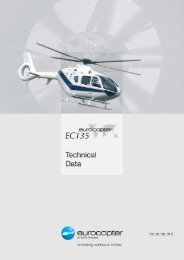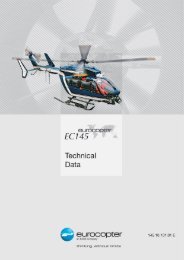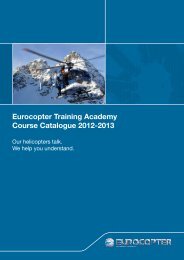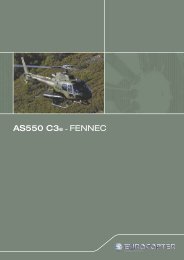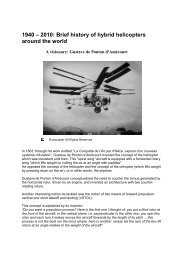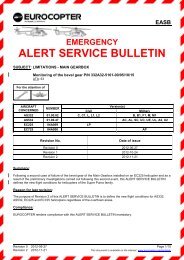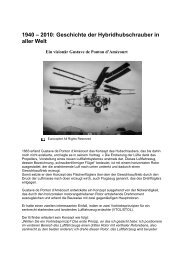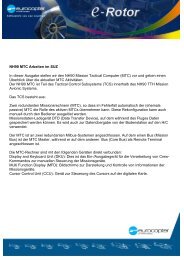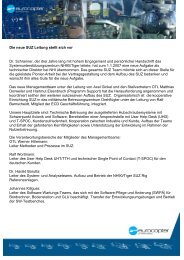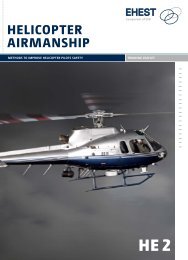EHEST Off-airfield Landing Site Operations - Eurocopter
EHEST Off-airfield Landing Site Operations - Eurocopter
EHEST Off-airfield Landing Site Operations - Eurocopter
You also want an ePaper? Increase the reach of your titles
YUMPU automatically turns print PDFs into web optimized ePapers that Google loves.
6 >> <strong>Off</strong> Airfield <strong>Landing</strong> <strong>Site</strong> <strong>Operations</strong><br />
1. pLANNING AND<br />
pREpARATION<br />
The basic principles of planning and preparation as outlined in the <strong>EHEST</strong> HE1 Safety<br />
Considerations Leaflet still apply. However landing at a site which is remote from an<br />
<strong>airfield</strong> offers the pilot extra considerations that may require additional information, some<br />
of which are highlighted below in a ‘matEd’ brief<br />
mEt ›› As the site may be remote from an <strong>airfield</strong> and associated met facilities,<br />
the pilot will be required to interpolate the information provided in the<br />
synoptic charts, TAFs, and METARs. If possible, a telephone call to speak<br />
to somebody at the LS for a local weather observation is advised.<br />
Information should be collated for both the outbound and return flight,<br />
including the anticipated dusk time - in case of a delay. It is important to<br />
carry a telephone number/’app’ for a met service so that updated<br />
weather forecasts can be collected from the LS.<br />
aircraft ›› Take off weight, C of G, and performance calculations will be required for<br />
the arrival and departure at the LS, especially if there is a difference in<br />
density altitude from the initial departure site and if passengers or cargo<br />
are being picked up or dropped off. Fuel is unlikely to be available at a<br />
remote site so a fuel diversion may be required – important if planned<br />
performance calculations require a reduced fuel load for the landing/<br />
take-off. The remainder of the aircraft documents should be checked as<br />
normal.<br />
(Note for Commercial <strong>Operations</strong> there will be extra EASA Ops/legal<br />
performance criteria to consider).<br />
atc ›› Whilst <strong>airfield</strong> information and NOTAMs for en-route/departure/diversion<br />
<strong>airfield</strong>s will be available through the normal channels, information for<br />
a remote LS may require further research, either in a LS directory or by<br />
speaking to the site operator/owner. If the LS is being used as part of an<br />
event, it is likely that there will formalised routes/procedures to follow<br />
and it may be subject to a temporary NOTAM or restrictions. Invariably a<br />
LS will require prior permission before it can be used, often in writing. Do<br />
not rely on the passengers for details as they may not be ‘aviation aware’,<br />
it is better to speak directly to the site operator to receive any last minute<br />
briefing on hazards, livestock, avoids, other activity – and possible<br />
landing fees!



